
Touring the Base
By Sara Krechel
As the weather starts to get a little warmer and a little nicer, consider getting outside to check out some of the historic artifacts and places around base. The Dahlgren Heritage Museum hosts monthly tours! Tours are free, but you must sign up beforehand. More information can be found by calling (540) 663-3680 or visiting http://dahlgrenmuseum.org/.
Here’s a snapshot of what you can learn.
Stop 1: A Gate
Dahlgren bust and 12-pounder boat howitzers
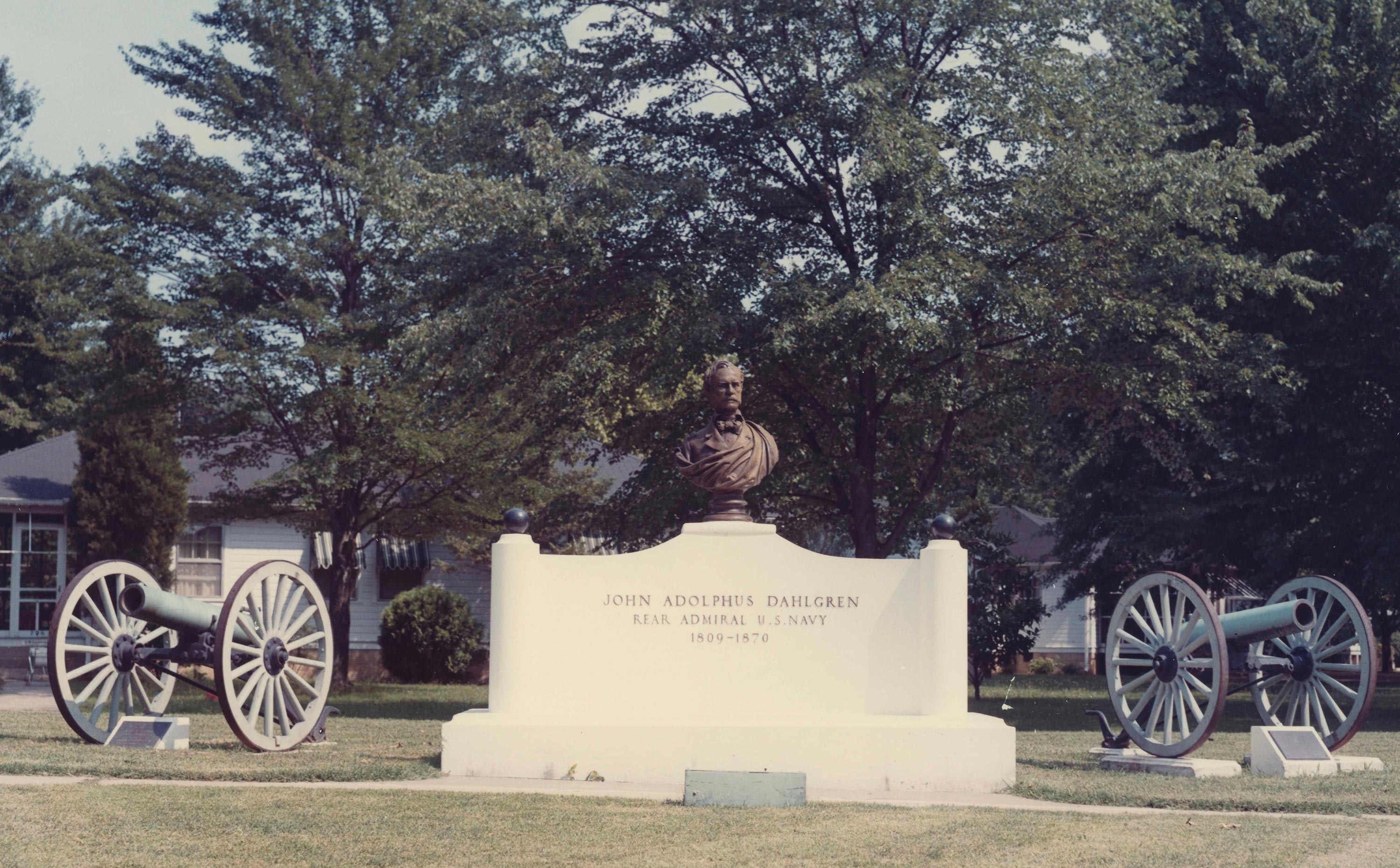
Recognized as “the father of American naval ordnance,” Admiral John Adolphus Dahlgren’s inventive applications of science and engineering during the mid-1800s brought major advances in naval gun safety, reliability, and performance. Check out our earlier blog for more information on his life. Just inside A Gate is the bronze bust of RADM Dahlgren, which was cast from a marble one borrowed from the U.S. Naval Academy Museum and was dedicated on May 27, 1954.
On both sides of the statue of RADM Dahlgren are two of his muzzle-loading 12‑pounder boat howitzers, manufactured at the Washington Navy Yard in 1864. These could be mounted in small boats as well as on field carriages, and they provided superior ship-to-shore firing than earlier canons.
19-inch armor plate
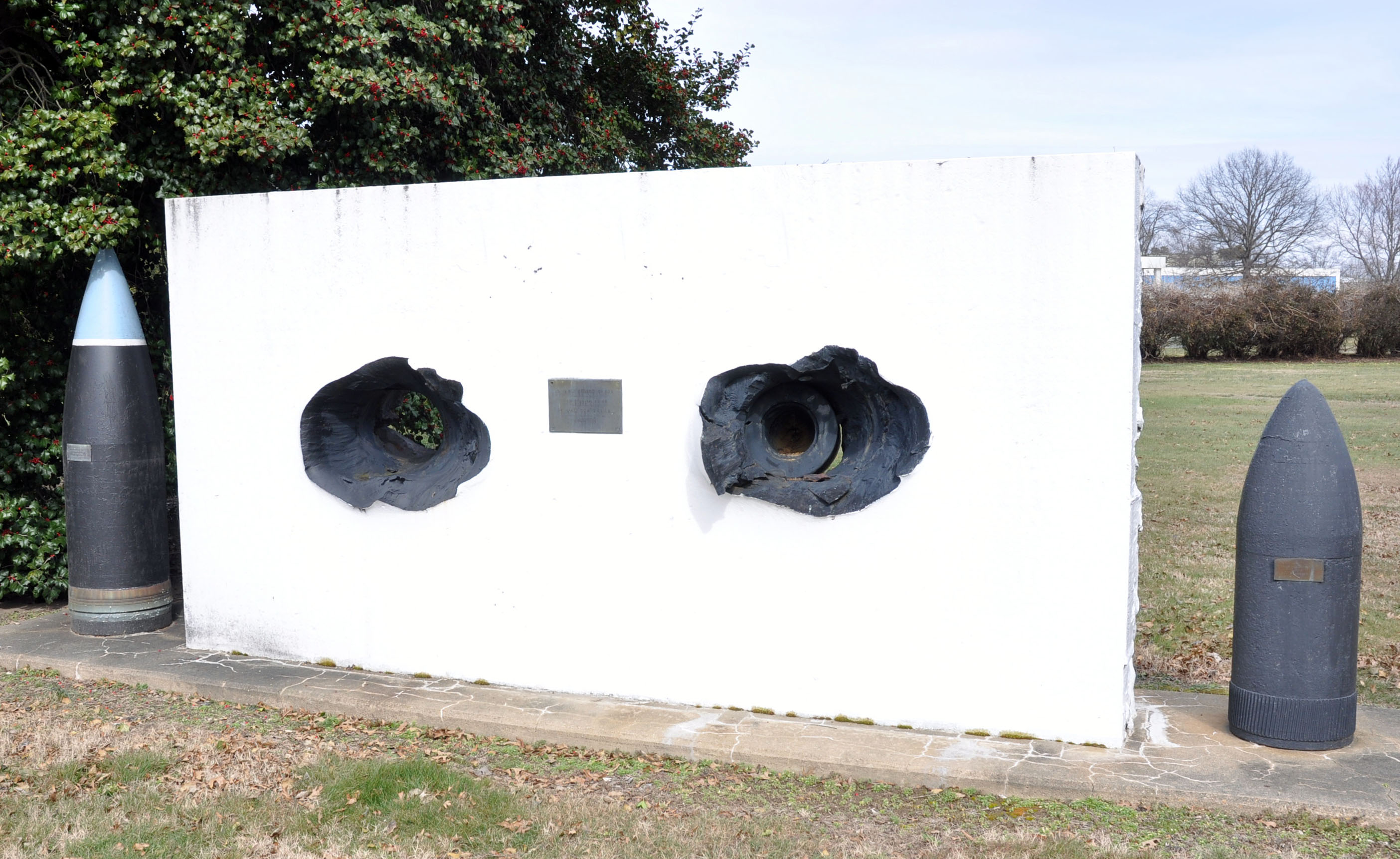
Armor plates of various strengths, thicknesses, and compositions have been tested here over the years to determine how they perform when struck by various types of ordnance. Plates are also used to develop, test, and prove weapons designed to defeat such protection. The 19-inch armor plate on display by A Gate is a sample of one manufactured for the battleship USS Alabama (BB-60) and was part of a test on May 7, 1945. Armor plate such as this was developed to shield the front of the battleship’s 16-inch, 45-caliber gun turrets.
18-inch projectile and 16-inch AP projectile
Dahlgren currently has two 18-Inch Type B target projectiles that date from 1921 and weigh 3330 pounds each. Design of Dahlgren site’s 18-inch gun by the Bureau of Ordnance began before January 8, 1917, but the Washington Naval Treaty, ratified in 1923, prohibited new guns of this size, so it was converted to a special 16-inch, 56-caliber test gun, which Dahlgren received in April of 1927. It would be restored to the 18-inch size minus one caliber (due to a technical issue) in 1940.
The 16-inch, armor piercing, Mk 3 projectile on display weighs 2110 pounds. The corresponding 16-inch guns made U.S. battleships of that period the ultimate symbols of American naval firepower.
Stop 2: Parade Field
USS New Jersey gun
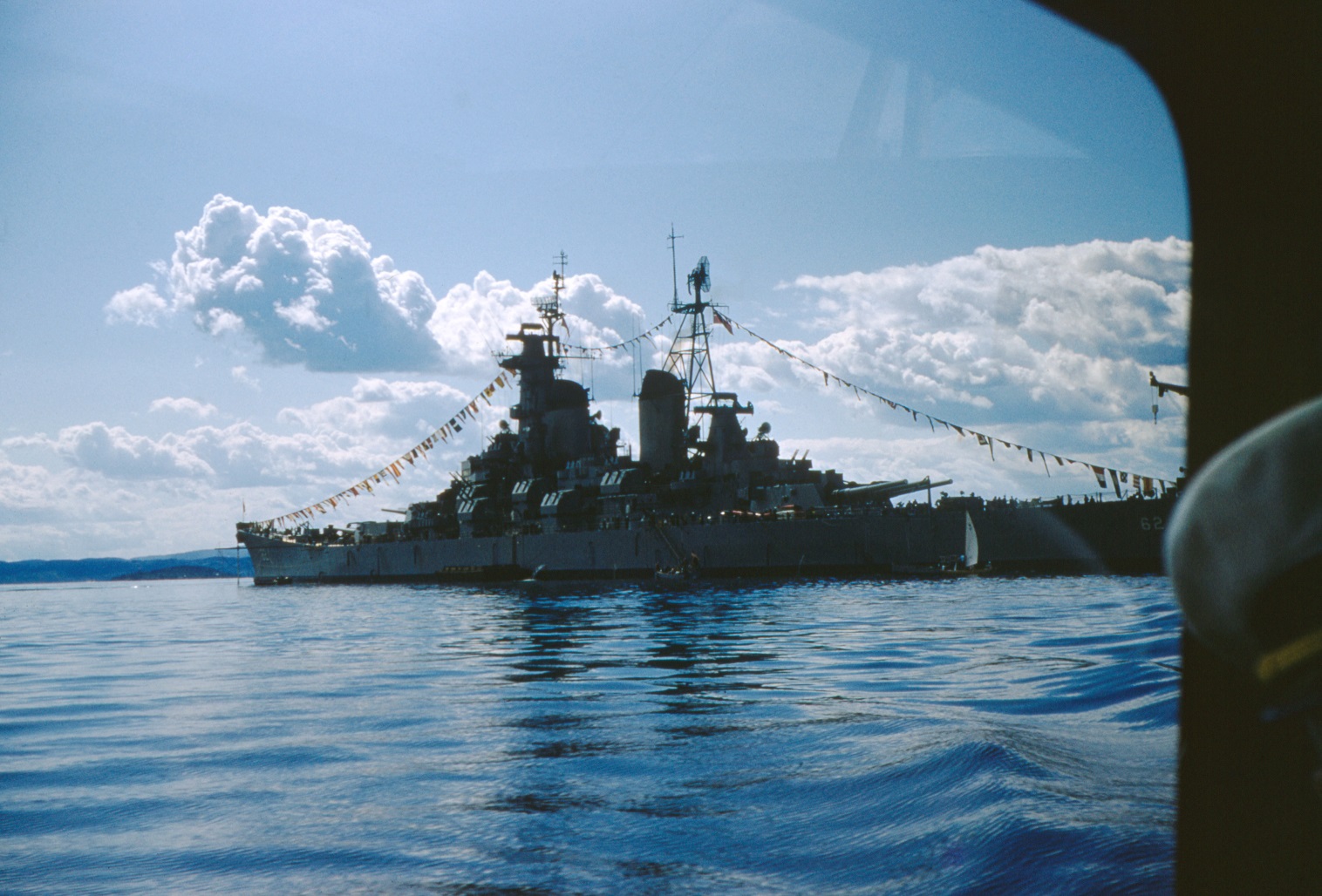
USS New Jersey, 1959. Photographed by CAPT S. E. Veazey
Manufactured at the U.S. Naval Gun Factory in Washington, D.C., this 16-inch, 50-caliber battleship gun was shipped to Dahlgren for proof testing before being installed on USS New Jersey (BB 62) in the center of the Number 2 turret. The gun was first fired on July 23, 1943, and was used during both World War II and the Korean War. The gun was removed from USS New Jersey and returned to Dahlgren in 1969, where it continued to be used for test firings until 1991.
A complete model of the USS New Jersey and more photos taken by CAPT Veazey are available for viewing in the lobby of Building 180.
Stop 3: Range Table
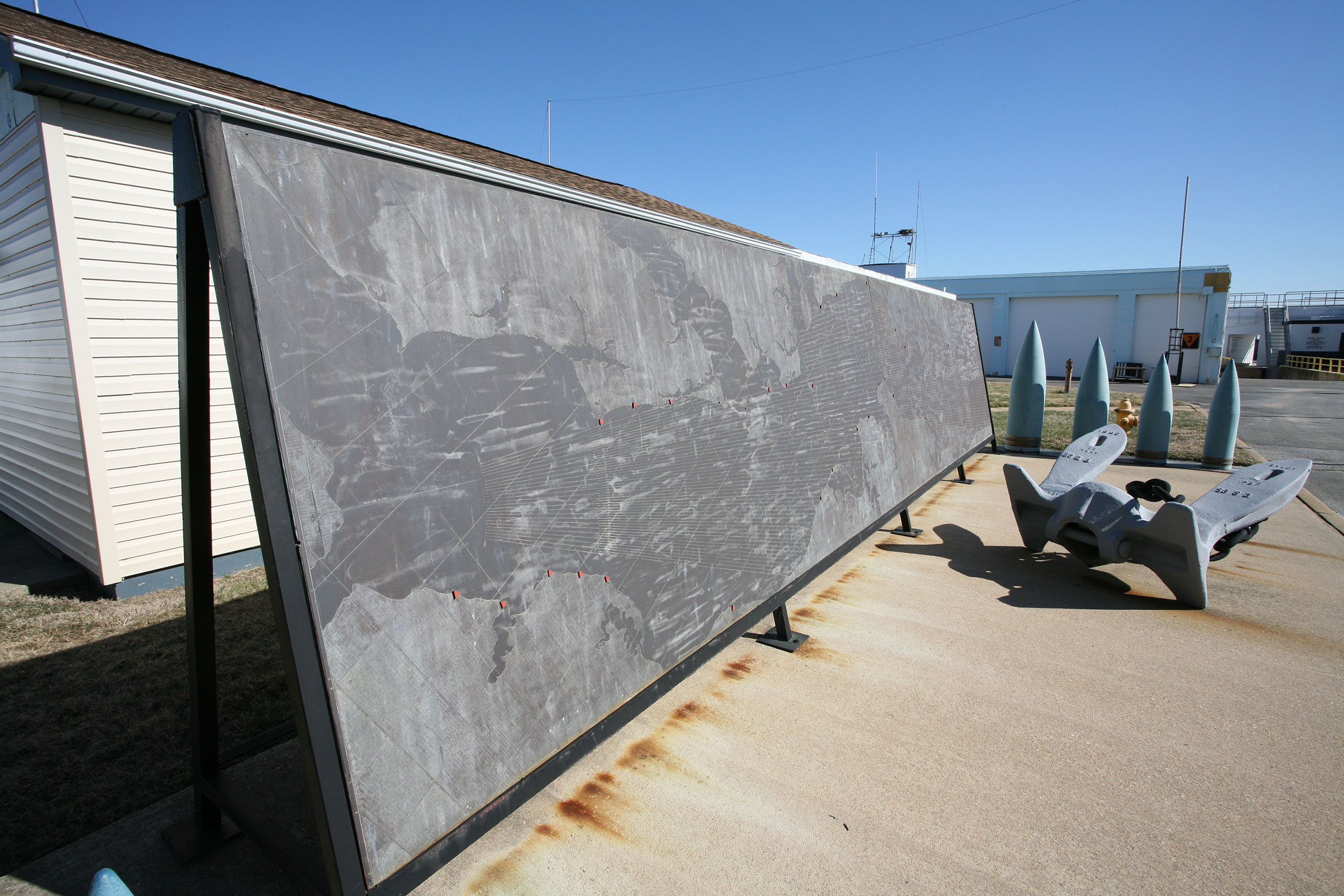
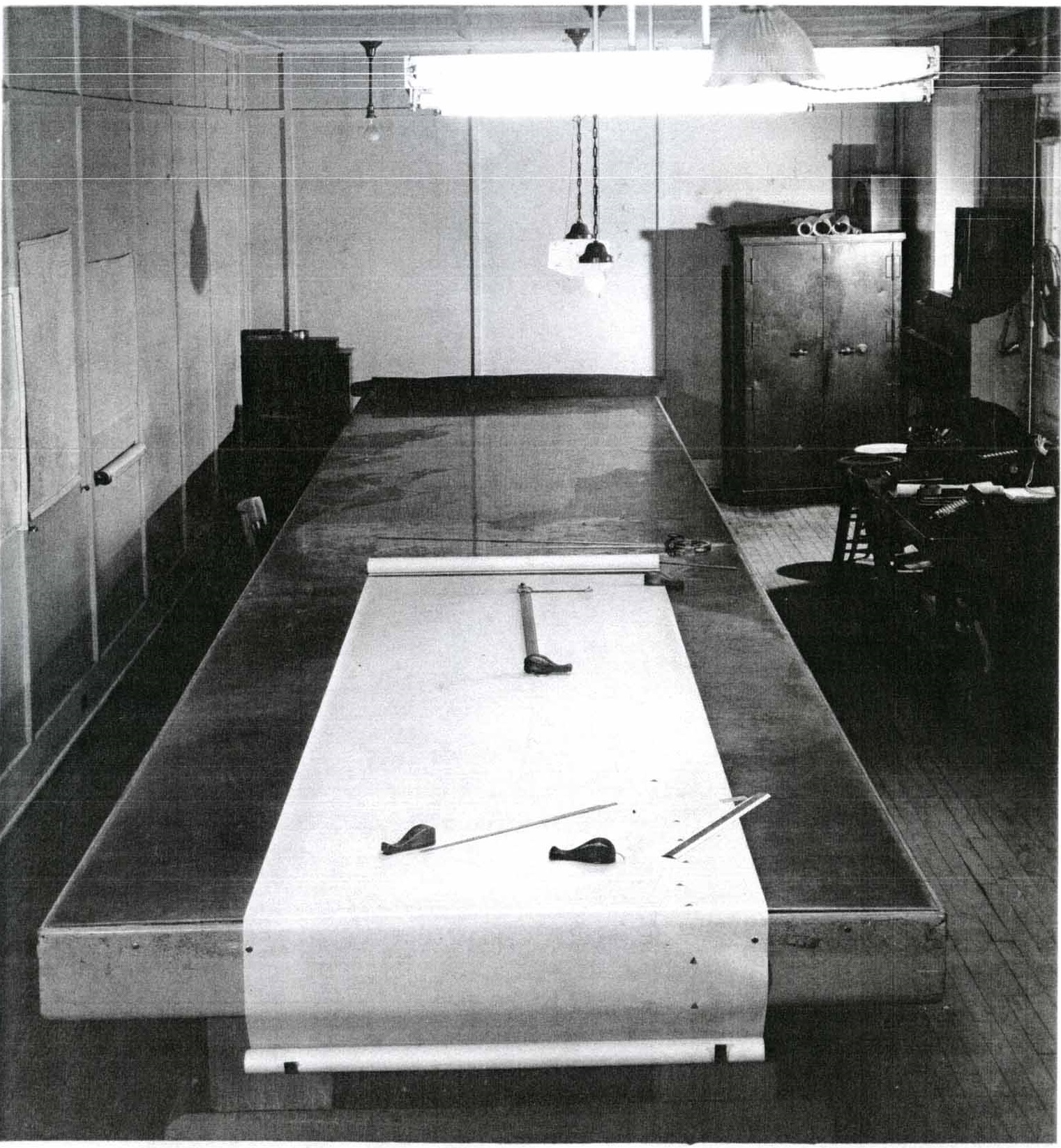
Dahlgren was chosen for the Navy’s new proving ground in 1918 because its Potomac River position made the site ideal for long-range gun testing. The Navy has authority to use the river for over 50 miles downriver, but most tests today extend only 5 to 15 miles downriver.
The range table was designed for plotting gun fire trajectories, and the map’s triangles signify range stations and other geodetically surveyed sites where instruments monitor and record the test data. Observers in downriver range stations would spot projectile splash points and inform Main Range personnel who would use triangulation to plot the projectiles’ precise landing locations.
The shells displayed are examples of the projectile sizes test-fired from the Main Range battery complex – from the 76-millimeter gun to the 18-inch battleship gun.
Stop 4: Plate Fuze Battery
Plate Fuze Battery
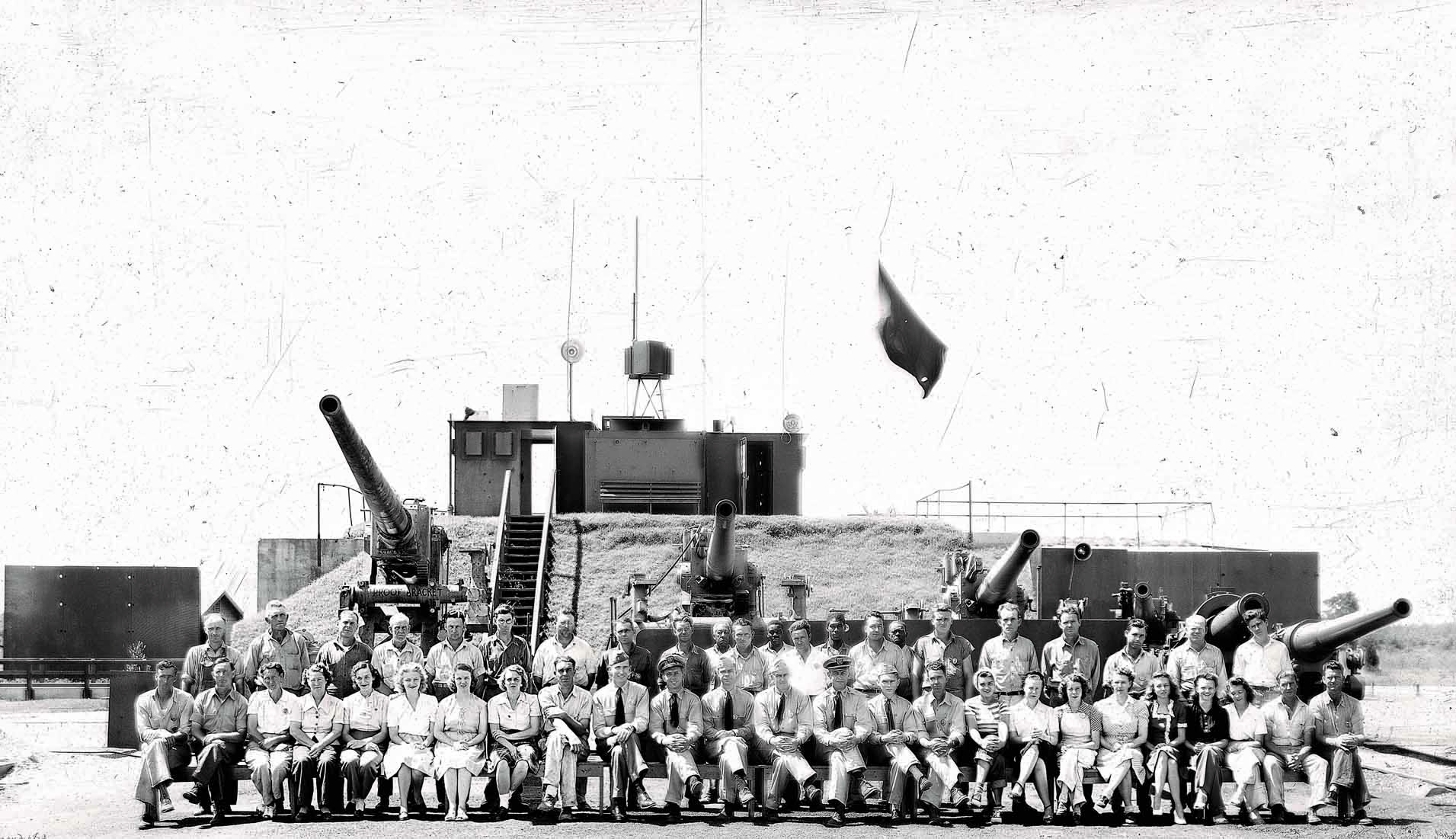
Plate Fuze Battery personnel, 1945
By August 4, 1941, fuze work had grown beyond the capacity of the main Plate Battery’s personnel, equipment, and schedules, so a Plate Fuze Battery was established. By February 1942, a Small Fuze Battery was added. During World War II, acceptance testing often overtook experimental work, but by March 1944, rockets were tested at the Plate Fuze Battery until that work required its own facility. It can be found between Terminal Range and the C Gate area on Higley Road.
Elsie Blocks
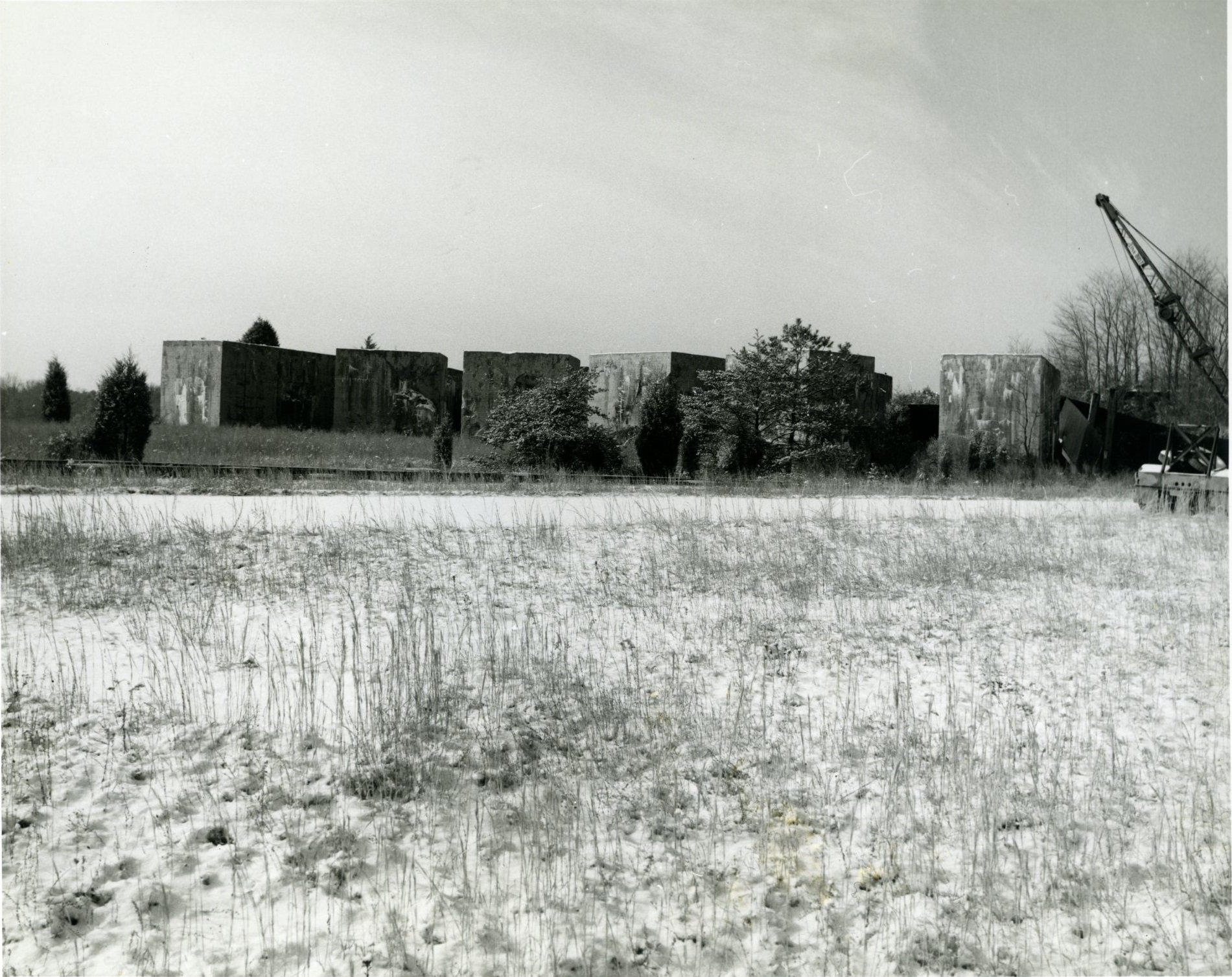
Elsie blocks during testing
Dahlgren Naval Proving Ground developed test bomb casings for the Elsie (or LC, meaning Light Case) project to produce small, nuclear bombs for carrier-based tactical strikes against hardened underground targets. A rugged, ground-penetrating, relatively lightweight device that could be fitted to naval aircraft and deployed at sea was designed. To simulate the forces of high-altitude air drop, experimental casings were shot from modified 16 inch guns and 14-inch guns toward large, thick concrete target structures, the ruins of which remain today hidden behind the trees at Plate Fuze Battery. Read more about the Elsie Project in our earlier blog.
Stop 5: Historic Guns
16-inch, 28.8-caliber gun
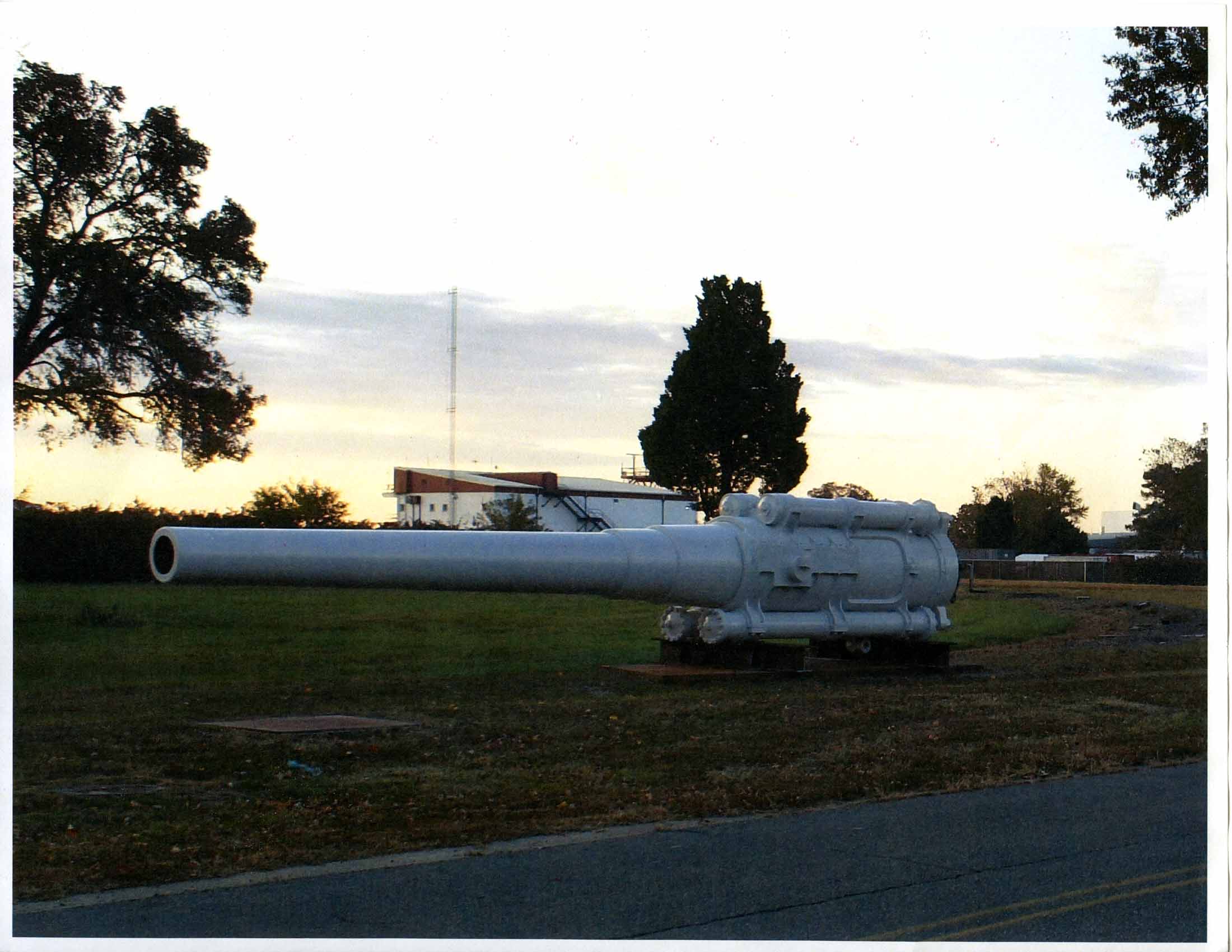
On Tisdale Road and across from Dahlgren Road is the 16-inch, 28.8-caliber gun. This gun was originally manufactured as the 13-inch, 35-caliber Mark II Gun in 1898. Although not in its original configuration, it is the oldest American battleship main battery gun in existence. The gun was originally part of the four-gun main battery aboard one of the Kearsarge (BB-5)-class or Illinois (BB-7)-class battleships. All five American battleships, armed with 13-Inch Mark II guns, participated in the 1907–1909 Great White Fleet world tour. The gun was converted to its present configuration so that Dahlgren would have a dedicated 16-inch gun for use at Plate Battery for testing armor-piercing projectiles, base fuzes, and armor plate. The gun was also used to test 970-pound experimental bombs in 1955. During its career as a test asset, this rifle fired a total of 26 rounds.
8-inch, 55-caliber gun
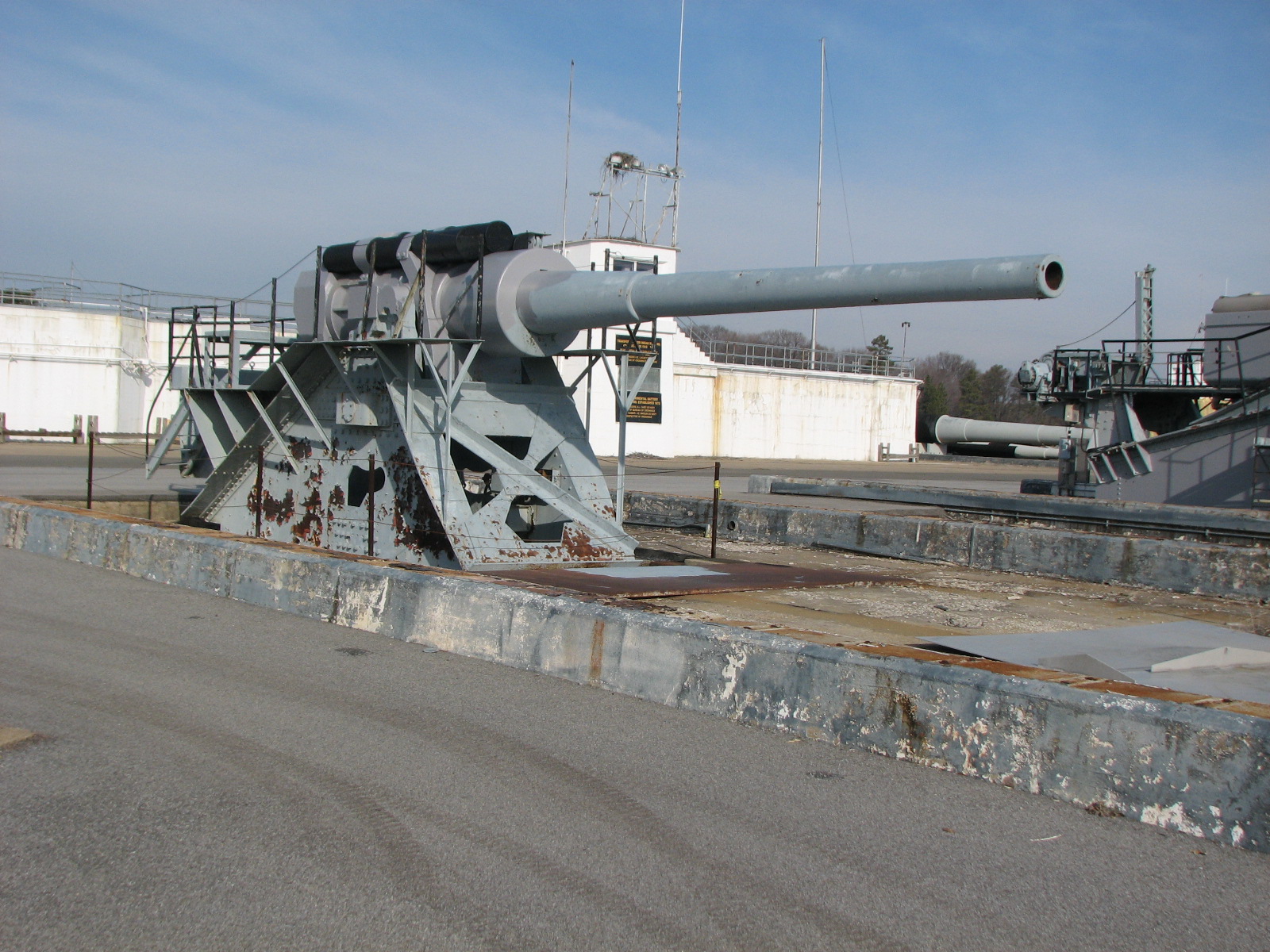
8-inch, 55-caliber gun in 2011, when it was on Main Range
This 8-inch Mark 15 gun was manufactured in 1943. Its unusual mounting is a test mount originally used for proving and test firing the Navy's last 10-inch guns. This test configuration was used to proof fire 8-inch Mark 15 “Bag Guns” from the 1930s through the Vietnam era. The mount has served to proof literally hundreds of 8-inch guns and supported a number of special projects to improve 8-inch ammunition fired from those guns.
16-inch barrels
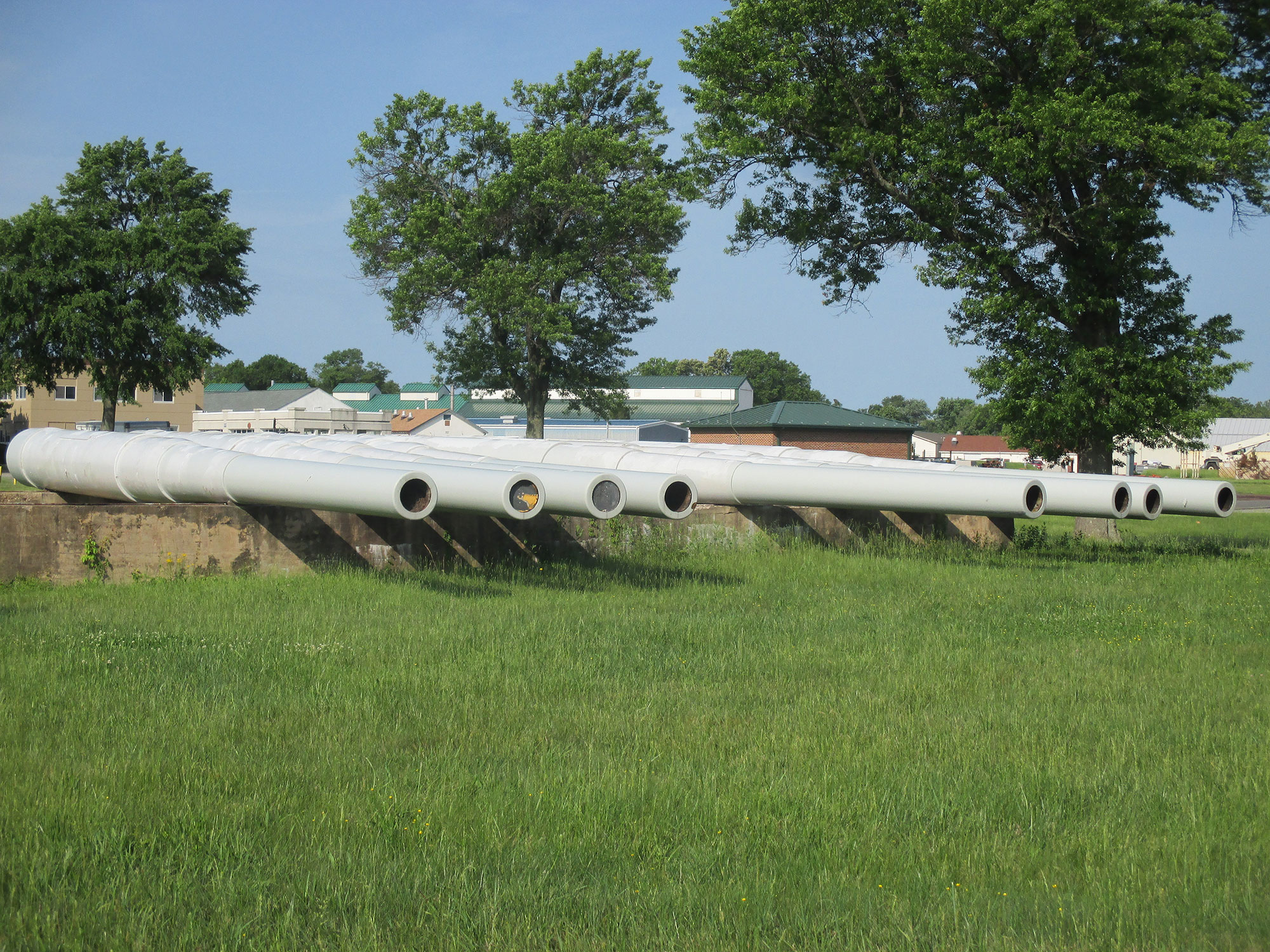
These eight 16-inch battleship gun barrels testify to the days when such ships were the epitome of naval firepower. When Dahlgren tested the 16-inch guns and projectiles, the rest of the base and nearby areas heard and felt these shots and the accompanying reverberations.
Stop 6: Administration Building
Administration Building (Building 101)
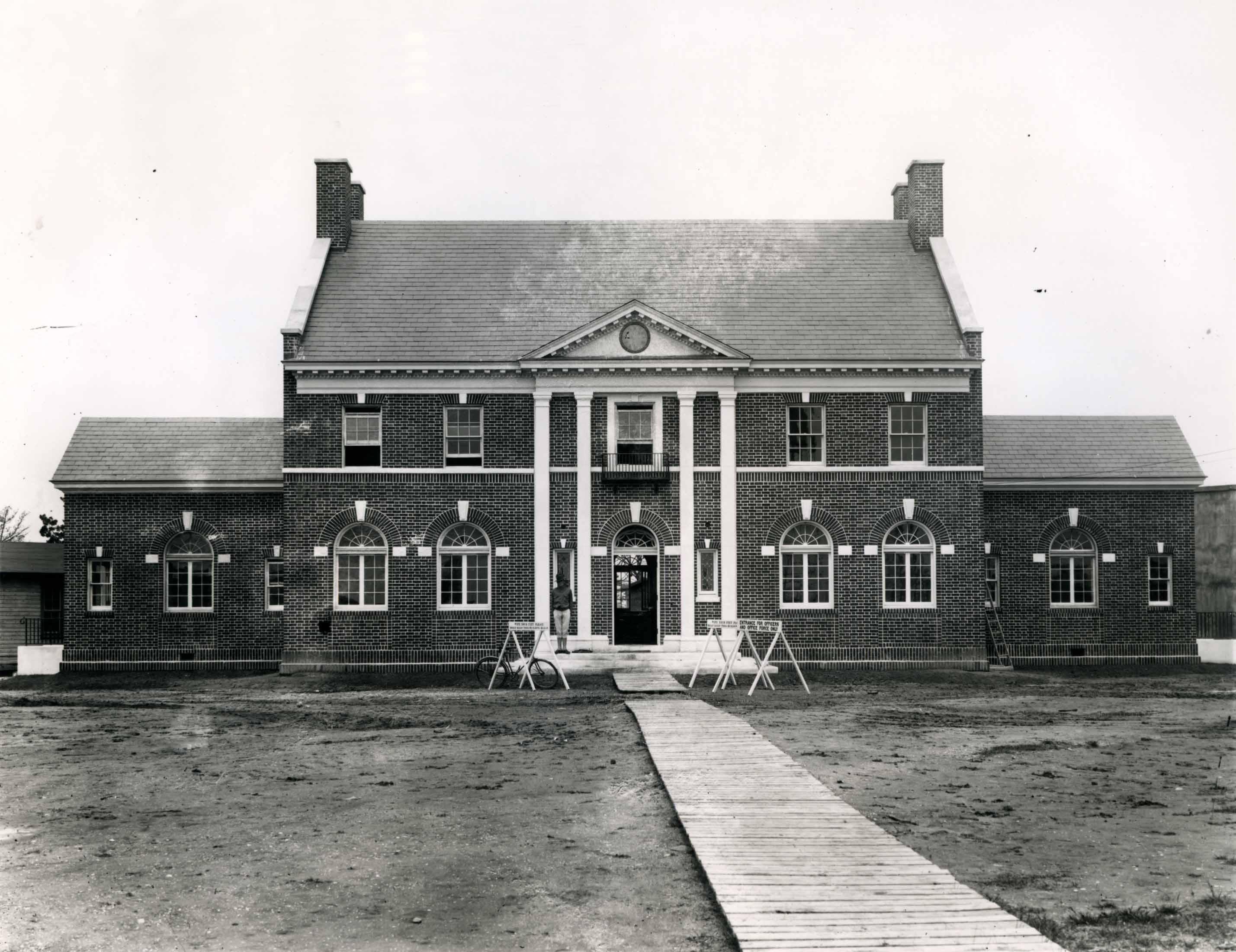
Administration Building during construction, 1920
The Administration Building, completed in 1920, is the oldest nontechnical building on the base, the first permanent brick structure, the most photographed, and most prestigious in that it has always housed the offices of the base commanders and their staffs. It is currently the main administration building being used by the host command (Naval Support Activity [NSA] South Potomac).
Railroad Station (Building 322)
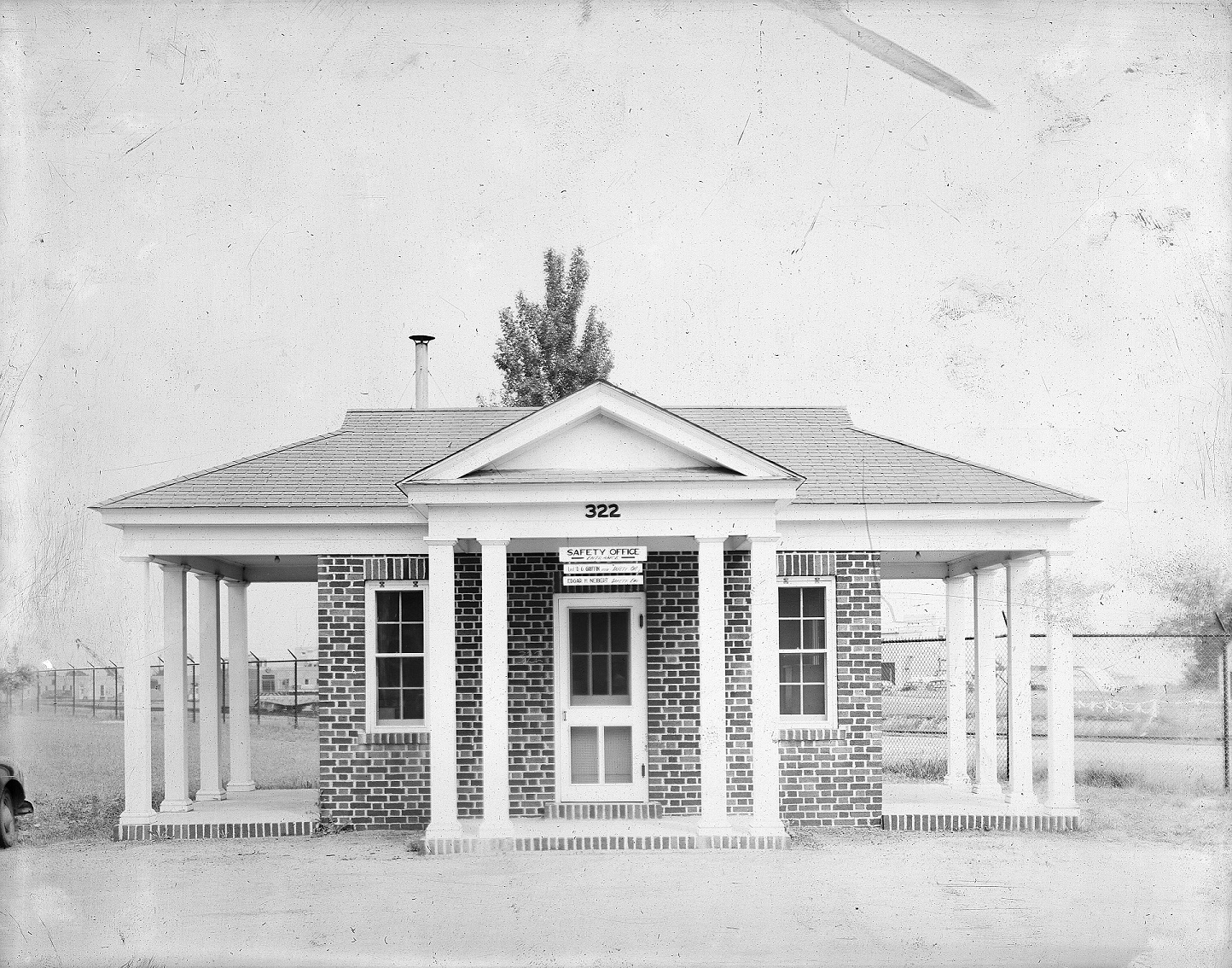
The Railroad Station in 1948, when it was used as the Safety Office
The small railroad station, completed in 1943, is one of the few remnants of the rail line the Navy constructed between Dahlgren and Fredericksburg from 1941 to 1942. During World War II, pieces of large equipment arrived by rail, and the train offered employees a better commute. By 1957, however, the railroad had fallen out of use and, by 1991, it was completely abandoned.